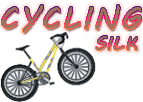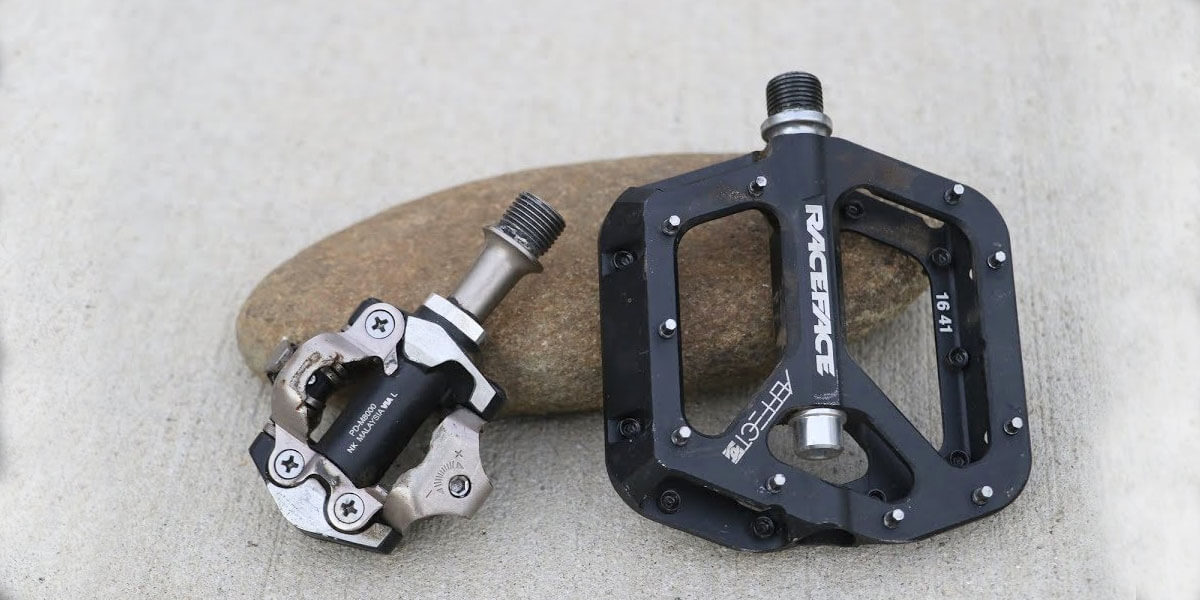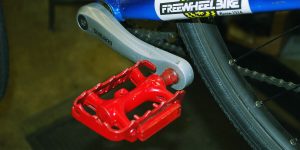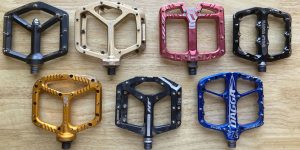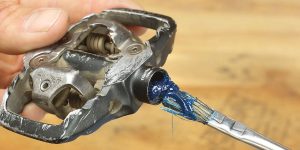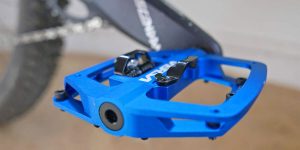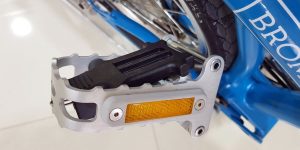The variety of bicycle pedal types can confuse novice and experienced cyclists. It’s not an easy choice, so how do you find the perfect fit for your unique riding style? For example, the flat vs clipless pedals debate has been raging on among cyclists for quite some time. Each side brings different arguments in its favor and tries to prove its case. Let’s find out what the difference is between flat and clipless pedals and why you should sometimes buy new pedals when your bike manufacturer has already taken care and included them in the package!
Flat pedals
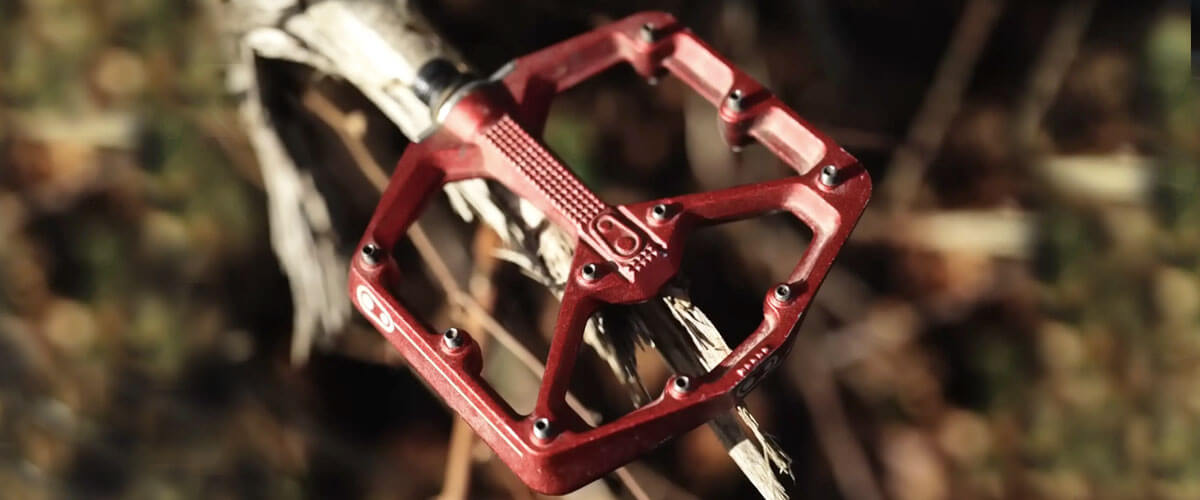
Flat pedals are stable and wide platforms that do not have an anchoring mechanism to fully secure the rider’s foot, providing a sense of freedom and ease of foot placement, which is important when navigating unpredictable trail sections.
They are typically made of steel, aluminum, and various composite materials. To provide a better grip on the sole, manufacturers often use spikes on the platform or raised edges.
Inside each platform is a threaded axle that screws into the bike’s crank pin and drives the pedal. Bearings inside the pedal body allow it to rotate smoothly around its axis.
The advantages and disadvantages of flat pedals are summarized in this table:
| Advantages | Disadvantages |
|---|---|
| Easy to use, making them versatile for any category of cyclist. | There is a lack of full power transfer, so pedaling efficiency decreases. |
| A sense of freedom and full control of leg movement while riding. | The possibility of unexpectedly slipping your foot and losing control of the vehicle. |
| Lower production costs, availability, and serviceability. | Lack of secure attachment leads to excessive fatigue in the legs. |
| Special footwear is not required. |
Clipless pedals
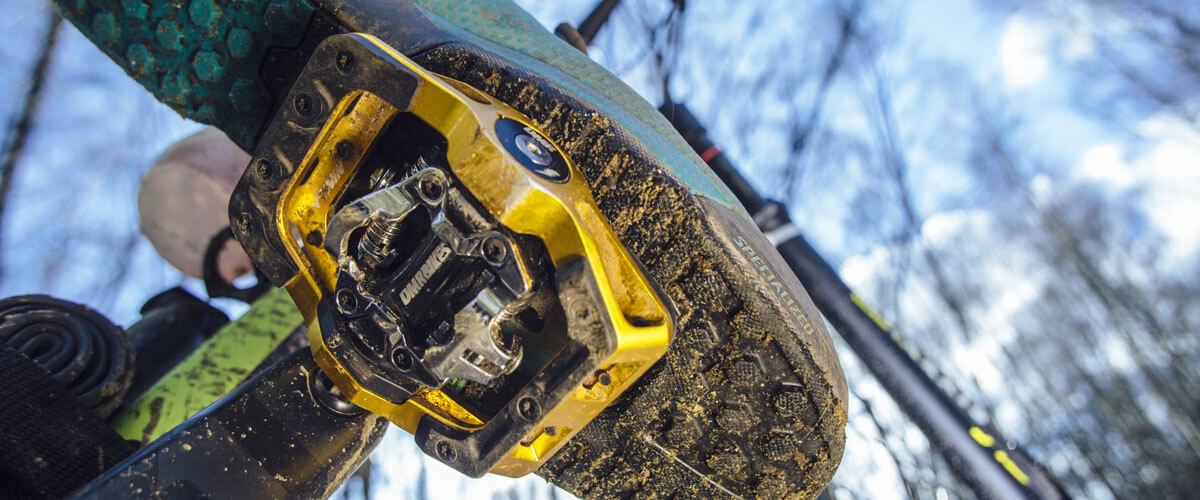
The name “Clipless” is a bit misleading because there are no clips. However, there is an attachment, and it completely secures the cyclist’s special sports shoes to the pedal platform.
The pedal usually has a spring-loaded or cam mechanism, which is a system where the body of the pedal and the spike attached to the sole of the cyclist’s shoe click into the groove on the pedal itself. The biker’s foot is securely locked in place and ready to make continuous circular movements.
Many beginners fear that this type of pedal requires special training to use, but everything is simpler, and to disengage from the contacts, all you have to do is turn your heel away from the bike. This is generally a reflex movement of the foot when falling.
Here is a chart showing the pros and cons of clipless pedals:
| Pros | Cons |
|---|---|
| The foot lock is clearly defined, which greatly improves the control and handling of the bike. | There is a risk of injury in emergency situations. The rider may not always be able to react in time to remove the foot immediately. |
| Optimal power transmission is essential for long-distance riding. | Cycling requires special shoes. They are not suitable for everyday walking on the ground or asphalt. |
| Reduce fatigue. Both feet provide full pedal stroke and cadence. | Requires additional maintenance (lubrication, bolt replacement). |
| Easy and comfortable when reversing (anchoring can help you move the rear wheel with your feet up). | Contamination of the pedal grooves may prevent proper engagement. |
| Requires a period of adjustment during initial use. |
Riding styles and preferences
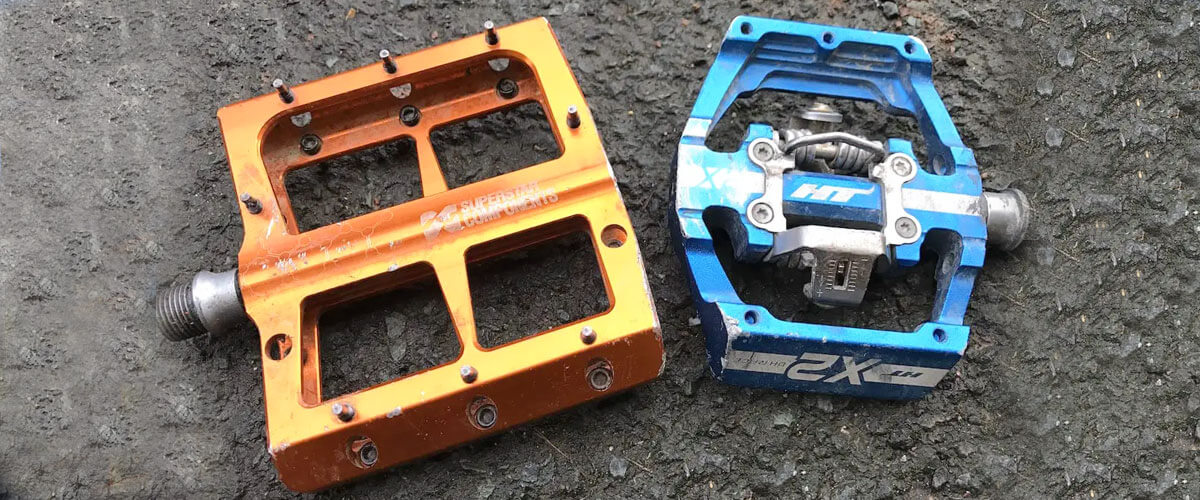
Of course, there is no one-size-fits-all pedal for everyone. It’s important to consider your riding ability and style, as well as your comfort level. For example, for beginners or those who ride more casually, platforms may offer a gentler learning experience, freedom of foot movement, and the ability to wear regular shoes.
Road cycling
More experienced riders who prefer speed, control, and maneuverability on the road or in rough terrain should opt for clipless models. Road racing is always an endurance ride that requires full power, control, and speed, so road riders almost always choose clipless models.
BMX, downhill riding, mountain biking
BMX riders, or those who prefer to ride downhill or uphill, choose “flat” models for maximum freedom of movement and comfortable foot placement. This riding style requires precise control of the bike and the ability to instantly change foot position to balance for tricky tricks, high-speed runs, or obstacles.
Commuting and touring
If your riding is limited to the city, with frequent stops and starts at traffic lights, you can enjoy the benefits of flat pedals, but without a clear foot lock, re-acceleration can be slow. Clipless pedals may be better than flat pedals if you commute regularly in all types of weather, and you may want to consider changing your shoes when you get to work.
Performance and efficiency
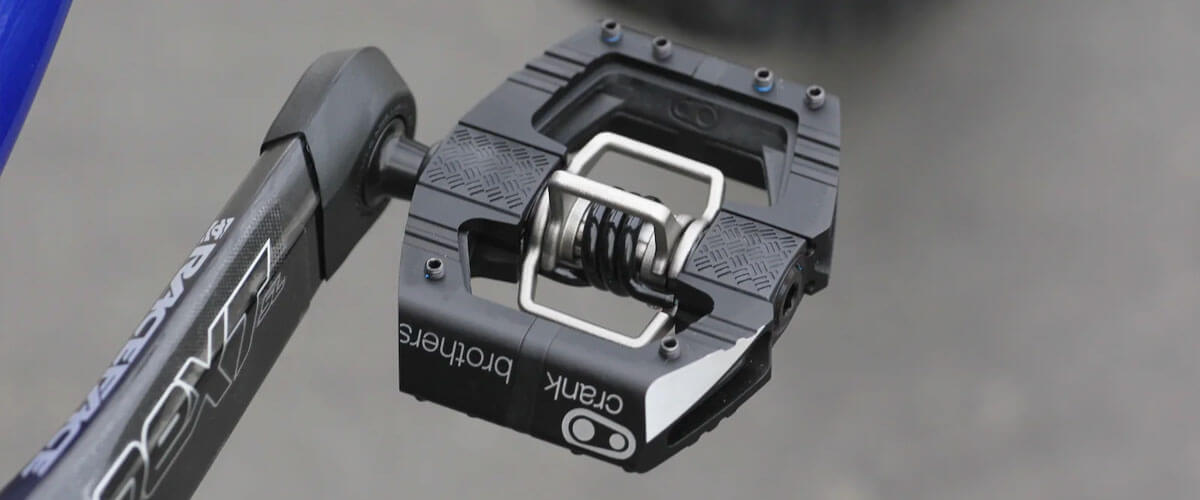
In conclusion, let’s take a look at the performance and efficiency of each model. This will help you to understand more precisely which type is suitable for your riding style:
- clipless vs flat pedals: The clear advantage of the former is that it provides a secure and direct connection between the foot and the pedal. This maximizes the efficiency of energy transfer and maintains speed throughout the entire pedal stroke, not just during the downstroke.
- flat vs clipless pedals: In extreme trail situations where a rider’s agility, maneuverability, and quick reactions are important, even if it means sacrificing some pedaling efficiency, flat pedals definitely have their advantages.
Therefore, when choosing one type of pedals or another, focus on your riding type and bike model. By the way, many cyclists use both types of pedals depending on the specific purpose of each ride. So consider this option to become a true all-rounder.
